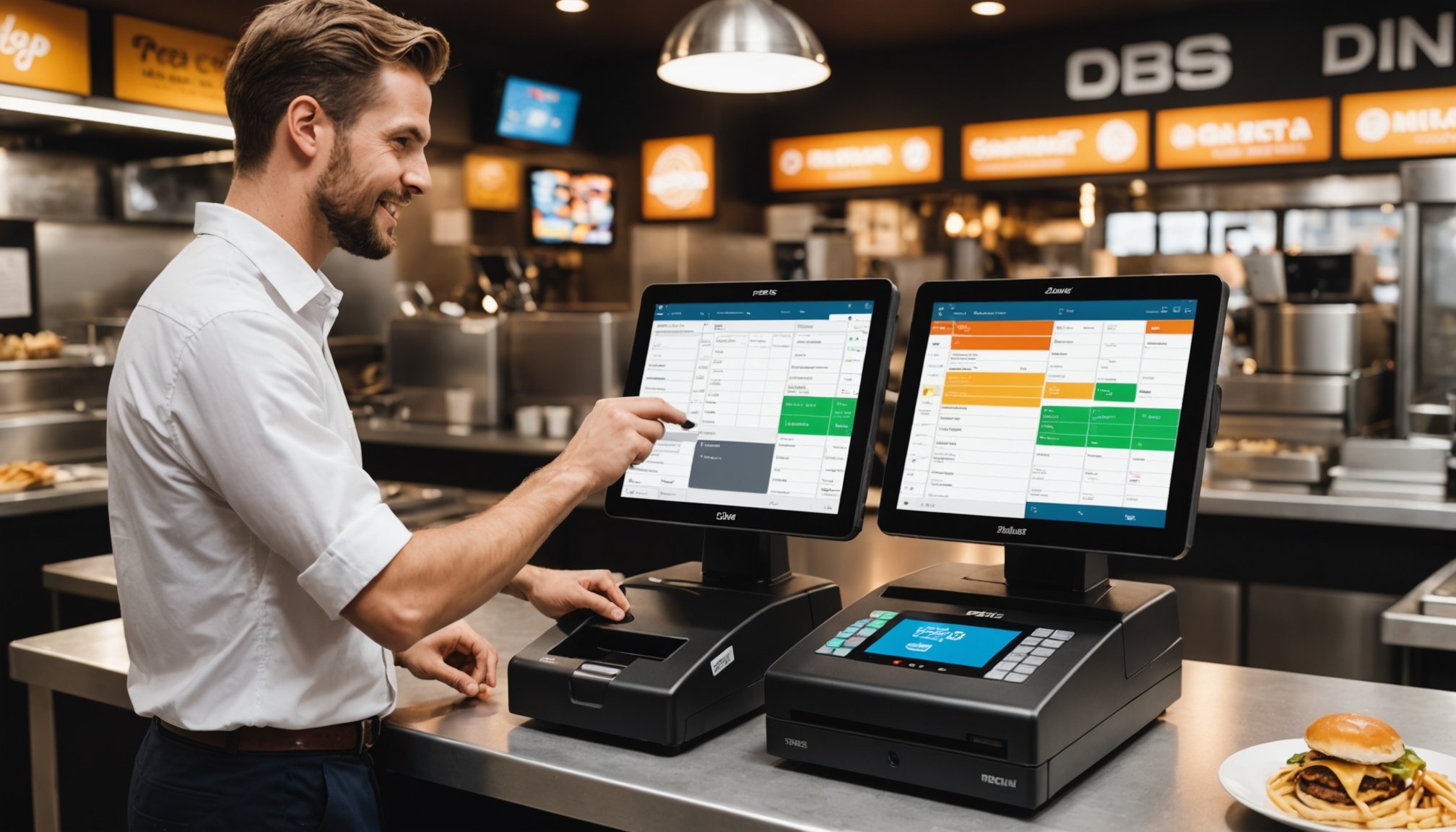Overview of POS Systems for Restaurants
POS systems are vital in modern restaurants, acting as the digital backbone for managing orders, transactions, and more. These restaurant technology solutions ensure efficiency in both dine-in and drive-thru services by streamlining operations and improving customer service.
A POS system’s fundamental purpose is to handle sales transactions, but its role in a restaurant extends far beyond that. It encompasses order management, payment processing, and inventory control, all of which are crucial for smooth restaurant operations. Key features such as real-time order tracking and customizable menus enhance service delivery, ensuring prompt and accurate handling of customer needs.
Additional reading : Transforming Fine Dining Training: Elevate Staff Expertise Through Virtual Reality Innovation
The importance of having sophisticated features cannot be underestimated, especially for drive-thru services where speed and accuracy are paramount. Modern POS systems support multiple payment options, from traditional card payments to mobile wallets, thereby increasing convenience for customers. Additionally, security features to protect customer data are fundamental to build trust.
Current trends in restaurant technology demonstrate a shift towards cloud-based systems, allowing for seamless integration with other platforms like online ordering and CRMs. As restaurants strive to meet evolving consumer expectations, the adoption of advanced POS systems has become a necessity.
Also to see : Innovative Ways to Launch Your Restaurant’s Latest Menu Hit: A Guide to Success
Essential Features of POS Systems
POS systems are the heart of restaurant operations, offering essential features to manage the multifaceted nature of the business effectively.
Order Management
Effective order management is crucial for both dine-in and drive-thru environments. POS systems facilitate this by providing real-time order tracking and updates. Customization options for menu items allow restaurants to adapt to customer preferences effortlessly. These capabilities ensure orders are processed accurately and promptly, enhancing customer satisfaction.
Payment Processing
Payment processing is a key functionality of POS systems, offering support for multiple payment options, from credit cards to mobile payment solutions. This flexibility ensures customers can pay through their preferred methods. Security measures are integral to protect sensitive customer data during transactions, thereby building trust and encouraging repeat business.
Inventory Tracking
Managing inventory efficiently is central to a restaurant’s success. POS systems offer real-time inventory management capabilities, sending alerts for low stock levels to prevent disruptions. Integration with suppliers allows for streamlined inventory replenishment, reducing the risk of stockouts and overstocking. These features collectively enhance operational efficiency and ensure smooth service delivery.
Customer Relationship Management (CRM) Features
Effectively managing customer relationships is crucial for any restaurant aiming to enhance the overall dining experience. CRM features in POS systems serve as powerful tools for tracking and interpreting customer preferences, allowing restaurants to tailor their services to meet individual needs. This personalized approach not only boosts customer satisfaction but also fosters a sense of loyalty, increasing the likelihood of repeat visits.
Loyalty programs and rewards integration play a significant role in maintaining engagement and encouraging consistent patronage. Restaurants can design unique loyalty schemes and special offers based on the data collected about customer’s purchasing behaviour. This includes tracking how frequently customers visit and what they typically order.
Furthermore, CRM systems provide insights into customer behavior, enabling restaurants to identify trends and adjust their offerings accordingly. These insights can inform marketing campaigns and strategic decisions, ensuring offerings align with customer expectations. In essence, CRM features do more than just track interactions—they provide actionable intelligence that can transform occasional diners into lifelong patrons. Incorporating CRM functionalities within POS systems is a strategic move towards achieving a competitive edge in the dynamic restaurant industry.
Integration Capabilities with Other Systems
The modern POS system’s integration capabilities are vital for maintaining seamless restaurant operations. These integrations extend the utility of POS systems beyond basic transaction management, enhancing functionality across multiple aspects of the business.
Integration with Accounting Software
Syncing sales data with accounting software is a game-changer for restaurants. It minimizes manual data entry, significantly reducing errors. Automated data flow ensures that financial reporting is accurate and up-to-date, streamlining operations. Examples of popular integrations include QuickBooks and Xero, which facilitate effortless financial management.
Compatibility with Online Ordering Platforms
In the current landscape, compatibility with online ordering platforms is indispensable. A seamless connection between POS and online systems enables efficient processing of take-out and delivery services. This integration not only enhances customer experiences but also optimises workflow. Common platforms like UberEats and Doordash are frequently integrated, ensuring a cohesive service.
Linking with Staff Management Tools
POS systems that link with staff management tools offer substantial benefits in workforce administration. Features like staff scheduling, payroll management, and performance tracking provide comprehensive insights into employee productivity. Additionally, embedded communication tools foster better staff engagement, enhancing overall operational efficiency in restaurants.
Case Studies and User Reviews
POS systems have revolutionized many restaurants, with case studies showcasing their success in real-world applications. In one instance, a bustling urban eatery enhanced efficiency and customer satisfaction by integrating a comprehensive POS system equipped with customizable menu options. This feature allowed the restaurant to adapt quickly to daily menu changes, directly reflecting customer preferences and increasing overall efficiency.
User reviews frequently highlight the tangible benefits of restaurant technology. For example, a popular diner reported a marked reduction in order processing time and errors thanks to the real-time order tracking feature of their POS system. This improvement not only streamlined operations but also elevated customer experiences, encouraging repeat visits and fostering loyalty.
Comparative analyses of different systems often reveal key advantages unique to each. Some systems excel in inventory management, providing timely alerts that help avoid overstocking. Others are praised for their CRM features, effectively boosting customer engagement through tailored loyalty programs. Restaurants often choose systems based on their distinct needs, considering user feedback and specific case studies to make informed decisions that align with their operational goals, ultimately achieving significant operational and customer service improvements.

